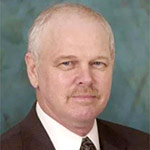The Gulag Archipelago — Nobel laureate Aleksandr Solzhenitsyn’s epic indictment of Stalin’s Soviet Union — chronicles the evil farce that is criminal ‘justice’ under Russian Communism. Anyone could be charged with, and convicted of, a crime if they opposed the government.
The architect of that ‘justice’ system, Lavrentiy Beria, was the infamous chief of the NKVD, Stalin’s secret police. He said that he could convict anyone of a crime — even the innocent.
“Show me the man, I’ll show you the crime!” Beria infamously bragged.
Being educated in the United States I was taught from elementary thru law school the Soviet system of dystopian injustice couldn’t happen here. Apparently under elected officials of the modern Democratic party, what I was taught is no longer true.
From the Democrat district attorney in Kenosha Wisconsin who unethically charged Kyle Rittenhouse with murder for defending himself from armed attackers,
…to Biden’s Justice Department’s disregard of the fundamental constitutional rights to be secure in one’s own home from “unreasonable search and seizure”,
…and of “due process of law.”
Now we have the Democrat Manhattan District Attorney indicting a Republican candidate for President on (pardon the pun) trumped-up charges. But before I get to the legal deficiencies of the Trump Indictment, I’ll explain how a Grand Jury works.
There is a joke among criminal law practitioners that an unscrupulous prosecutor can manipulate a grand jury to “indict a ham sandwich”. The joke refers to the unfettered influence prosecutors have over grand jurors.
There are two types of jury in our criminal justice system. The one most people are familiar with, if for no other reason that it’s the one portrayed in TV lawyer shows, is the trial jury — which is known in legal terms as a “petit jury” for reasons I’ll skip.
In a criminal trial before a petit jury, the prosecution is bound by strict rules as to what they can say, and present as evidence. More importantly, the credibility and quality of the evidence a prosecutor presents can be challenged by the defense through cross-examination.
As one of the leading authorities on America rules of evidence, Professor John Wigmore, said, “beyond any doubt the greatest legal engine ever invented for the discovery of truth,” is cross-examination of witnesses. Wigmore, Evidence §1367, p. 27 (2d ed. 1923).
Confrontation of the witnesses against an accused is enshrined in the Sixth Amendment of the United States Constitution:
“In all criminal prosecutions, the accused shall enjoy the right … to be confronted with the witnesses against him.”
Our founders included that right to prevent abuses such as what occurred in the infamous “Star Chamber” under King Charles I, who used it to criminalize political dissent…
“Finding its support from the king’s prerogative (sovereign power and privileges) and not bound by the common law, Star Chamber’s procedures gave it considerable advantages over the ordinary courts… its methods lacked the safeguards that common-law procedures provided for the liberty of the subject.”
The Sixth Amendment right to confrontation of witnesses does not apply to proceedings of a Grand Jury. The rationale is that unlike the function of a petit jury, which is to find the truth, the function of a Grand Jury is to accuse.
For example, in 1935 the Florida Supreme Court explained the function of a grand jury in the American legal process as an “inquisitorial and accusatorial body … which can bring charges by way of indictment, but cannot convict or punish”.
To accomplish that, the investigatory process must be “unimpeded by the evidentiary and procedural restrictions applicable to a criminal trial.”
In other words, a prosecutor unfettered by constitutional speed bumps (such as rules of evidence and procedure) can get a grand jury to “indict a ham sandwich”.
Or a presidential candidate…
So how does the difference between a grand jury and petit jury relate to the Trump indictment”? The chief witness against Trump is a convicted liar (Trump’s former lawyer, Michael Cohen).
Cohen did not have to be cross-examined before the grand jury. The prosecutor was not even required to tell the grand jurors about Cohen’s multiple felony convictions. Conversely, in a trial before a petit jury based on this indictment, Cohen will not only be cross-examined, the petit jurors will know about his conviction for lying — and can consider that in judging whether to believe him.
Because of the procedural and evidentiary rules applicable to a petit jury trial, it is not unusual for a petit jury to acquit an accused indicted by a grand jury. The bedrock principle of our criminal justice system (which dates back to the 4th century in Rome) is that the accused is “presumed innocent until proven guilty”. That standard doesn’t apply to the grand jury.
The prosecution has to prove guilt to a petit jury.
Any experienced prosecutor will tell you that if proving your case depends on the testimony of a convicted liar, then you have no case!

